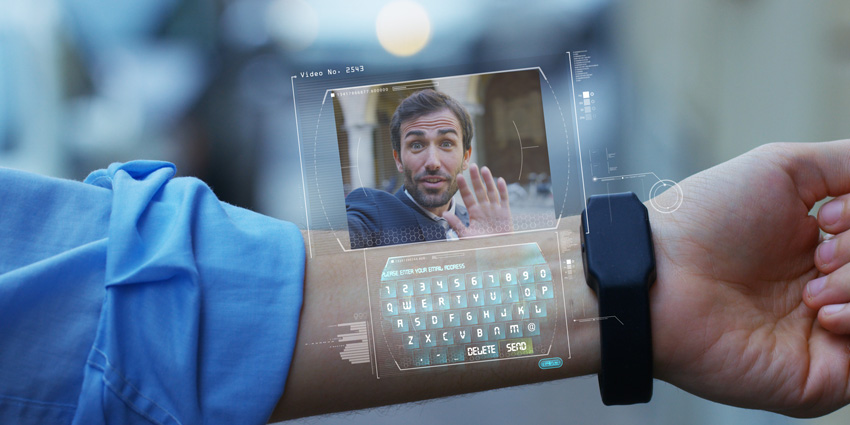From a business perspective, the forecasted rise of wearable technology in the enterprise offers a wide range of benefits. As well as increasing employee engagement, performance, and productivity, workplace wearables could also be the key to helping organizations better understand both their workforce and their customers – but there’s a catch!
According to a recent PwC study, many employees in the modern workplace are reluctant to take a device from their employer or share any of their data in the work environment – and when you think about it, it’s easy to understand why.
In the same way we freak out when we see advertisements for things we’ve secretly been thinking about randomly pop up on our social media feed, the idea that a business is tracking our personal data is unsettling, to say the least. In fact, according to the same PwC study, 38% of employees don’t believe employers would use their data for their personal benefit, confirming there’s a significant lack of trust amongst workers when it comes to enterprise wearables.
Considering all of the above, we decided to list some of the most effective strategies businesses can employ to improve user adoption for enterprise wearables. Let take a look at the examples below.
Employee Health & Wellbeing
As the coronavirus pandemic continues to wreak havoc and spread fear globally, the public interest in personal health and wellbeing is at an all-time high. According to PwC, 65% of people believe technology now plays a massive role in health and wellbeing, and developers have quickly latched on to this trend.
In a recent study, Fitbit, a leader in the consumer wearables space, claimed the device could detect early warning signs of COVID-19 in users before symptoms started the show – a feature that appeals to just about every demographic at this moment in time. Figures from Fitbit’s report for the third quarter of 2020 also show a 5% increase in sales since the start of the pandemic, and we’re confident this growth will continue as the demand for health-monitoring tech increases.
Taking a leaf from Fitbit, then, businesses attempting to build trust and encourage workers to adopt a BYOD (bring your own wearables) strategy should take an active role in their employees’ health and wellbeing. Though these wearables can increase business performance, their primary function should be to benefit employees by keeping them healthy and safe from harm.
Increased Productivity
While increased productivity is an obvious benefit for the business, it can also be a huge selling point when increasing BYOW adoption amongst employees.
According to a recent report, the arrival of wearables in the enterprise can increase employee productivity by as much as 8%, helping them meet targets faster, secure more potential bonuses, and deliver the best results that keep their jobs secure.
The same study also claims that job satisfaction amongst workers using wearables in the workplace increased by 3.5%, proving the technology provides direct benefits to the end-user rather than business owners alone.
Safer Work Environment
In dangerous work environments like factory floors, construction sites, and mines, the implementation of wearable technologies that track employee location, vital signs, and other essential metrics could potentially save employees’ lives.
According to this report, wearable technology is now commonly used in the oil & gas sector to ensure deployed workforces’ safety in dangerous and remote environments. By fitting wearable AR & AI technology into employees’ clothing and eyewear, companies can “augment natural human capabilities such as enhanced vision or smell” to significantly reduce workplace accidents and deaths.
While users may feel reluctant to grant employers access to their private information, they are much more likely to welcome the technology with open arms if they know it will significantly improve their safety.
Enhanced Training
Another considerable advantage wearable technology like AR smart glasses can offer to employees is a vastly improved training experience that provides better engagement, speeds up performance, and allows users to learn on the go.
While training is super important, it can be dull and draining for employees. Additionally, much of the information gained within a theoretical learning environment is lost once the employee reaches the practical stage.
However, with wearables, smart glasses, and remote-guidance platforms like ThirdEye, users can learn while they earn, cut out much of the monotony, and focus on the job they’re getting paid to do.
The Future of BWOW
Although we don’t expect to see the widespread adoption of enterprise wearables at scale in 2021, successful use case examples from large organizations who’ve already implemented the technologies into their infrastructure tell us BYOW is not that far away.
Considering this, within the next five years it’s not too much of a stretch to assume that enterprise wearable will soon become as much a part of the modern workplace as laptops and smartphones – and the benefits listed above are what will drive that adoption.







